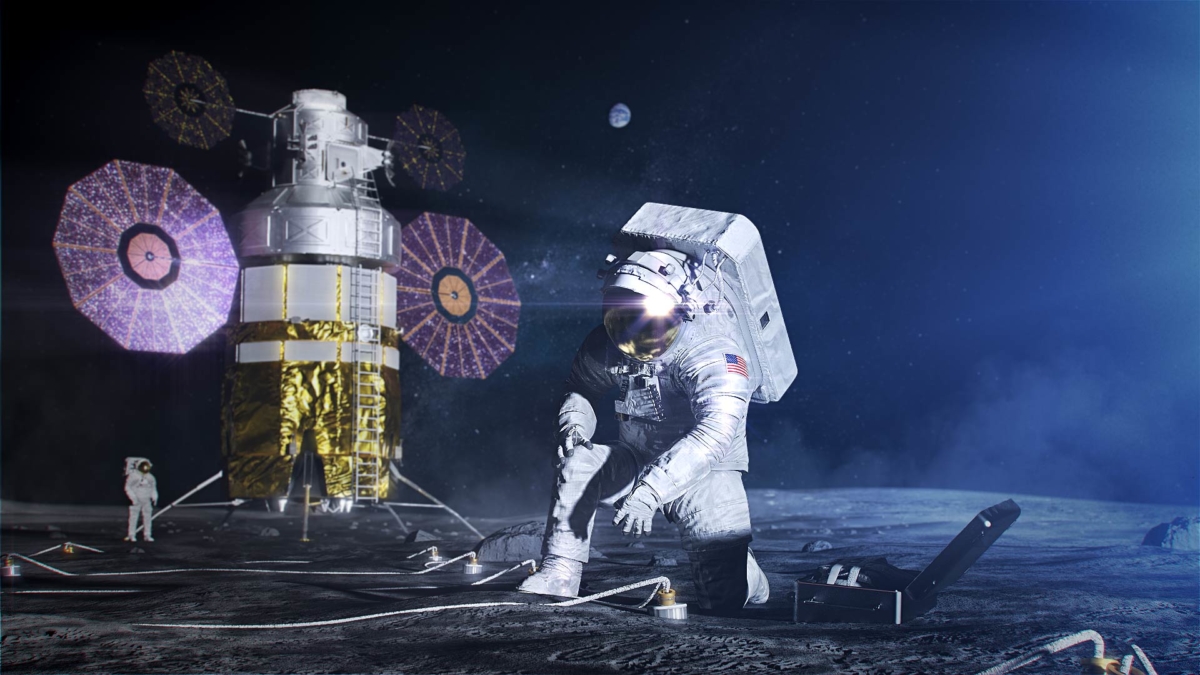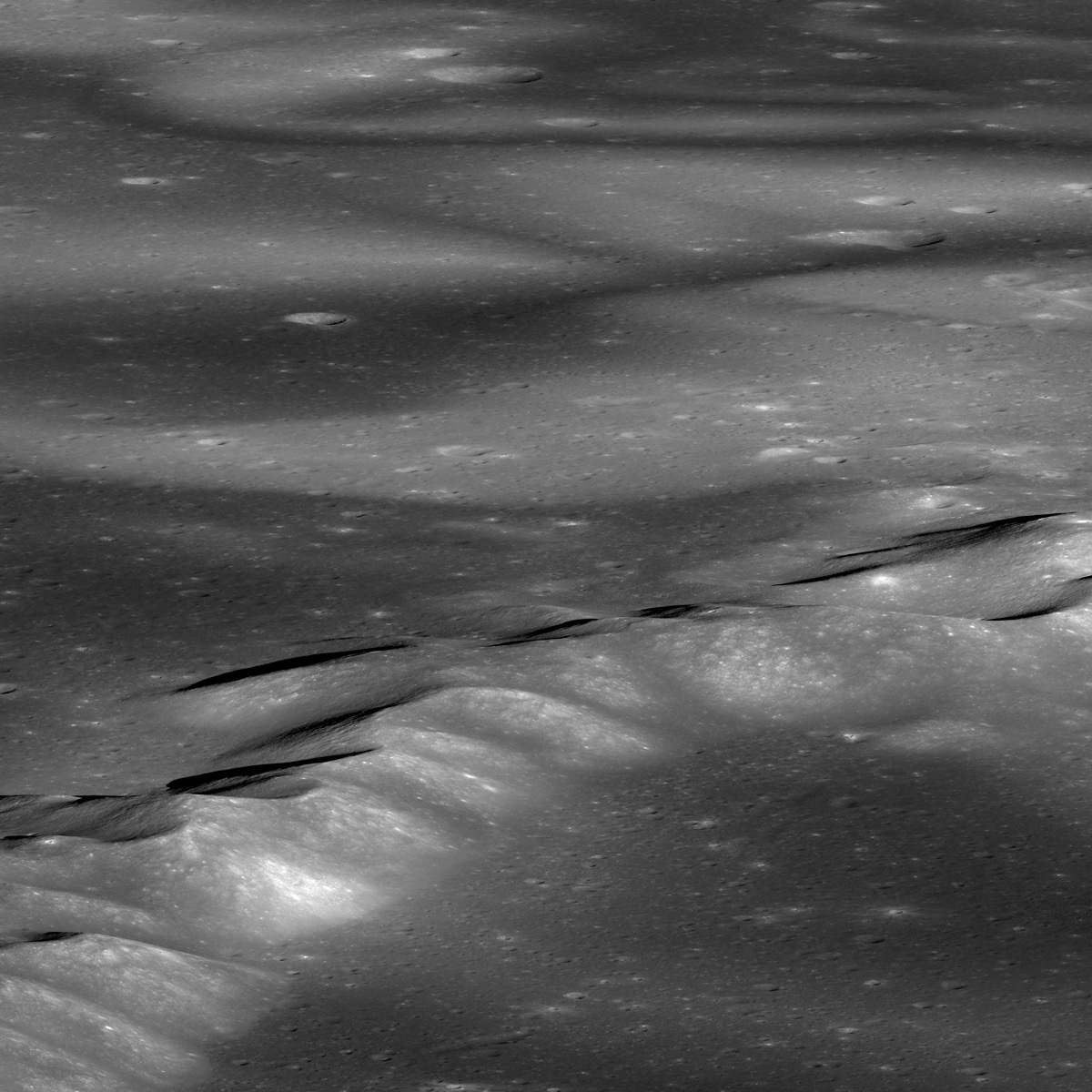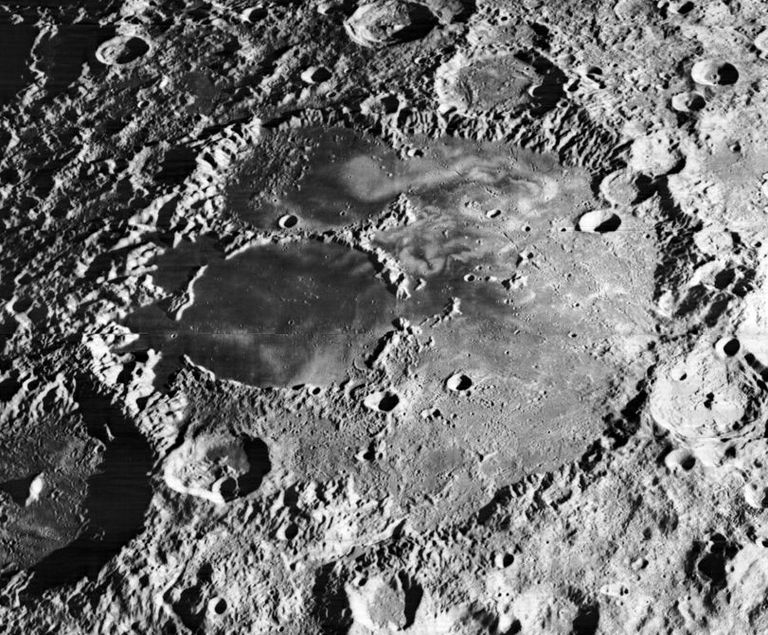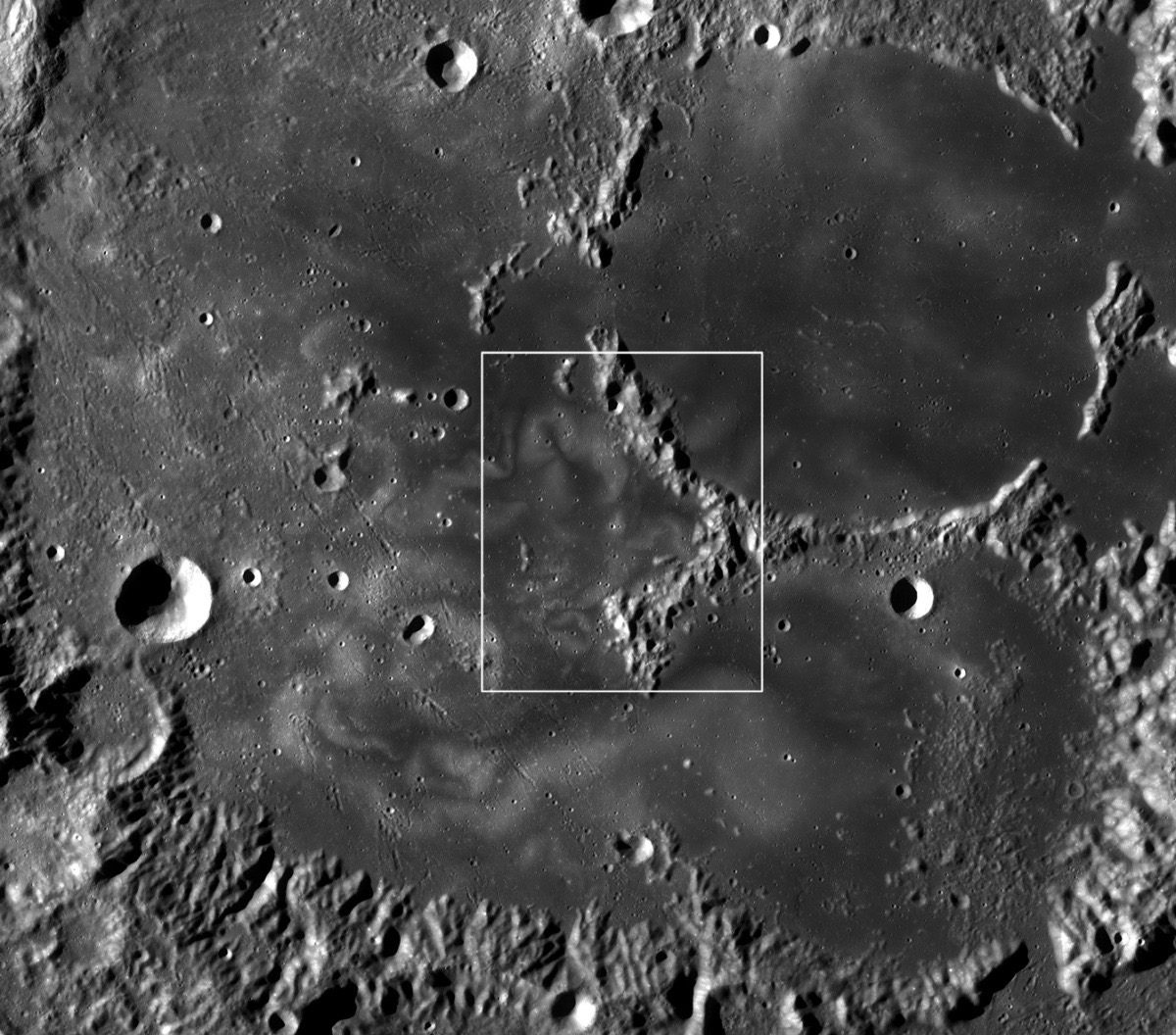Could Weird Lunar Swirls Help People Settle the Moon?
The mysterious features are associated with magnetic anomalies.
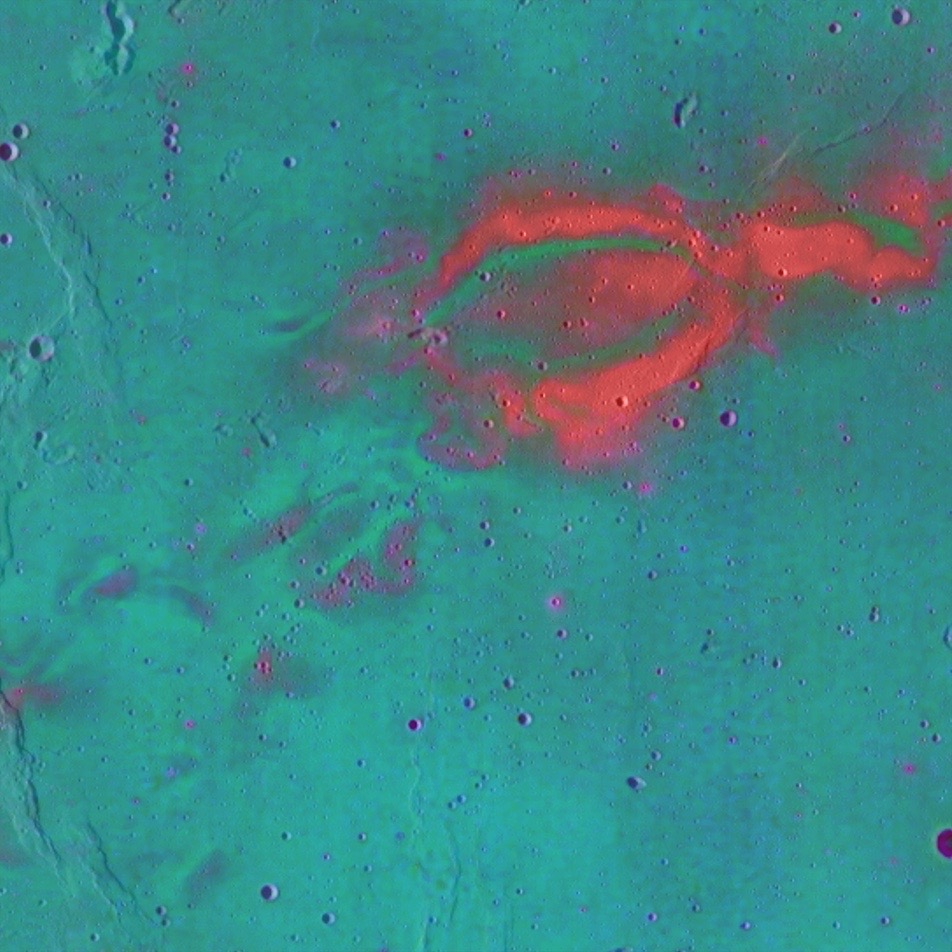
There are captivating features on the moon that stir up thoughts of lyrics from a Carly Simon song: "I had some dreams…they were clouds in my coffee. Clouds in my coffee…"
So, think about adding a squirt of milk into a cup of steaming coffee and give it a whisk. Eddies of cream go swirling around the cup.
On the moon, this pattern is called a "lunar swirl" — bright features that can be tens of miles across and appear as isolated individuals or in extensive groups or belts. Lunar swirls are found where the lunar crust is magnetized, although not all magnetic areas have swirls. Furthermore, the bright areas in the swirls look to be less weathered than their surroundings.
Related: How the Moon Evolved: A Photo Timeline
Those observations have led to several hypotheses about how lunar swirls are formed and several ideas about the separate question of the origin of the magnetized crust.
Could these tattoo-like oddities help sustain a human presence on the moon?
Magnetic fields
A recent NASA Artemis presentation on lunar science that should be performed by 2024, in the category of non-polar landers and rovers, specifically noted: "Explore scientifically valuable terrains not investigated by Apollo, including landing at a lunar swirl and making the first surface magnetic measurement."
Breaking space news, the latest updates on rocket launches, skywatching events and more!
(Artemis is NASA's program of crewed lunar exploration, which aims to put astronauts down on the moon by 2024 and establish a sustainable human presence there by 2028.)
Scientists looking into the magnetic fields suggest that they could have formed from processes related to impacts — either by a comet coma, or plasma effects arising from the formation of a large impact basin.
Another possibility is that the magnetic fields that have been sensed from orbiting spacecraft originate in subsurface bodies of rock that were magnetized by an ancient global lunar field generated in the moon's core (a "dynamo" that has since died out).
Magnetic field shields
There is also controversy about the relationship between the magnetic regions (called "magnetic anomalies") and the high-reflectance swirly markings.
Perhaps when fine dust particles are lofted by micrometeoroid impacts or electrostatic forces, an existing magnetic field over the swirls sorts them according to their susceptibility to magnetism, forming light and dark patterns with different compositions.
The comet-impact hypothesis predicts that each swirl formed at the same time as its associated magnetic anomaly. Gas and dust from the comet coma may have scoured the lunar surface, exposing fresher regolith from below the upper weathered layer.
Alternatively, since particles in the solar wind (electrons and ions) are electrically charged, they can be deflected by the magnetic fields. So, it's possible that the magnetic field shields the surface from weathering by the solar wind, attenuating the soil-darkening process that normally causes bright crater rays to fade away with time.
If the solar wind shielding explanation is correct, one could reasonably ask: Might the swirls offer electrostatic/magnetic field radiation protection for future crews on the moon?
Related: Can NASA Really Put Astronauts on the Moon in 2024?
Wanted: rover mission
Observations of lunar swirls by NASA's Lunar Reconnaissance Orbiter appear to provide support for the magnetic shielding hypothesis, but don't rule out the other theories.
"A lot of these questions you could answer by a surface mission to one of those areas," said David Blewett of the Planetary Exploration Group at the Johns Hopkins University Applied Physics Laboratory (APL) in Laurel, Maryland.
"I'd like to see a rover drive around and find out how much solar wind is getting to the lunar surface and investigate the effects that causes the soil and swirls to darken with time. What's the origin of those magnetic anomalies? The moon doesn't have a global magnetic field. Yet it has these sections of magnetized crustal rock. That's interesting when considering an ancient lunar dynamo…if there was one," Blewett told Space.com.
Open questions
Blewett said that there are open questions about the hydration of the lunar surface and how it does — or does not — vary with time of day. Remote-sensing data from moon orbiters have revealed spectral features consistent with the presence of lunar hydroxyl (OH) and water (H2O) on the moon's surface.
"It could be that magnetic focusing of the solar wind associated with swirls could replenish the OH/H2O every month," Blewett said.
The in-situ resource utilization possibility that comes to mind at lunar magnetic anomalies/swirls, Blewett said, has to do with solar-wind implantation.
"It's pretty clear that the local magnetic fields are shielding the surface from solar-wind protons — these are the bright parts of the swirl. But it could be that the fields are directing extra ions onto the surface in some places, corresponding to the 'dark lanes' within the swirls," Blewett suggested. "Think of it as rain rolling off an umbrella: You stay dry, but a ring around you gets extra wet from the runoff from the umbrella."
Since there seem to be links between the implantation of solar wind protons and production of hydration (either OH or H2O), "it could be that at a magnetic anomaly we could find small areas with higher-than-normal abundances of OH/H2O," Blewett said.
Related: Photos: The Search for Water on the Moon
Scientifically interesting
Karl Hibbitts, a planetary scientist also at APL, agreed that the bright parts of the swirls have fewer volatiles than non-shielded areas. That's due to lower flux of protons, he said, and subsequently less so-called "solar wind OH," which is actually OH formed in silicates and/or oxides from implanted solar wind protons.
"I do consider swirls scientifically interesting, but the best places to explore for volatiles remain at the poles," Hibbitts observed. "The colder, the better for retaining all volatiles."
Mini-magnetospheres
Given the science of swirls — and what we do and don't know about them — just what utility they offer for moon explorers, be it for shielding or resource-extraction purposes, is up for discussion.
Because the mini-magnetospheres above the swirls protect the surface from the solar wind and so might also protect against cosmic rays, "they might be preferential locations for future habitats," said Ian Crawford, Professor of Planetary Science and Astrobiology at Birkbeck, University of London.
However, Crawford said he's skeptical that these fields will be strong enough to make a difference. "Surface observations of the radiation environment are desirable to check this," he told Space.com.
The solar wind that doesn't reach the swirls, Crawford said, is presumably deflected around it, "so the regolith around the base of the mini-magnetospheres might be somewhat more enriched in solar wind-implanted volatiles than the lunar regolith average. Again, I think surface measurements will be needed to confirm this."
Swirl of questions
In the end, swirls are aptly named; there remain a swirl of questions as to their nature and possible use in upcoming human sojourns to the moon.
"We really need a lunar rover to go explore a magnetic anomaly/swirl. They are marvelous natural laboratories that could be used to study a wide range of important phenomena in planetary science: generation of magnetic fields, space weathering, dust behavior and interaction of the solar wind with magnetic fields, among others," APL's Blewett pointed out.
"In many ways," Blewett concluded, "right now is almost a more exciting time in lunar science than the Apollo days. We know so much more, and we have discovered so many interesting things about the moon — the cornerstone body of planetary science."
- Moon Master: An Easy Quiz for Lunatics
- Home On the Moon: How to Build a Lunar Colony
- NASA Plans to Build a Moon-Orbiting Space Station: Here's What You Should Know
Leonard David is author of the recently released book, "Moon Rush: The New Space Race" published by National Geographic in May 2019. A longtime writer for Space.com, David has been reporting on the space industry for more than five decades. Follow us on Twitter @Spacedotcom or Facebook.


Leonard David is an award-winning space journalist who has been reporting on space activities for more than 50 years. Currently writing as Space.com's Space Insider Columnist among his other projects, Leonard has authored numerous books on space exploration, Mars missions and more, with his latest being "Moon Rush: The New Space Race" published in 2019 by National Geographic. He also wrote "Mars: Our Future on the Red Planet" released in 2016 by National Geographic. Leonard has served as a correspondent for SpaceNews, Scientific American and Aerospace America for the AIAA. He has received many awards, including the first Ordway Award for Sustained Excellence in Spaceflight History in 2015 at the AAS Wernher von Braun Memorial Symposium. You can find out Leonard's latest project at his website and on Twitter.
